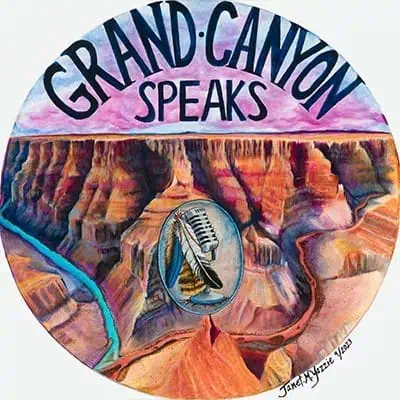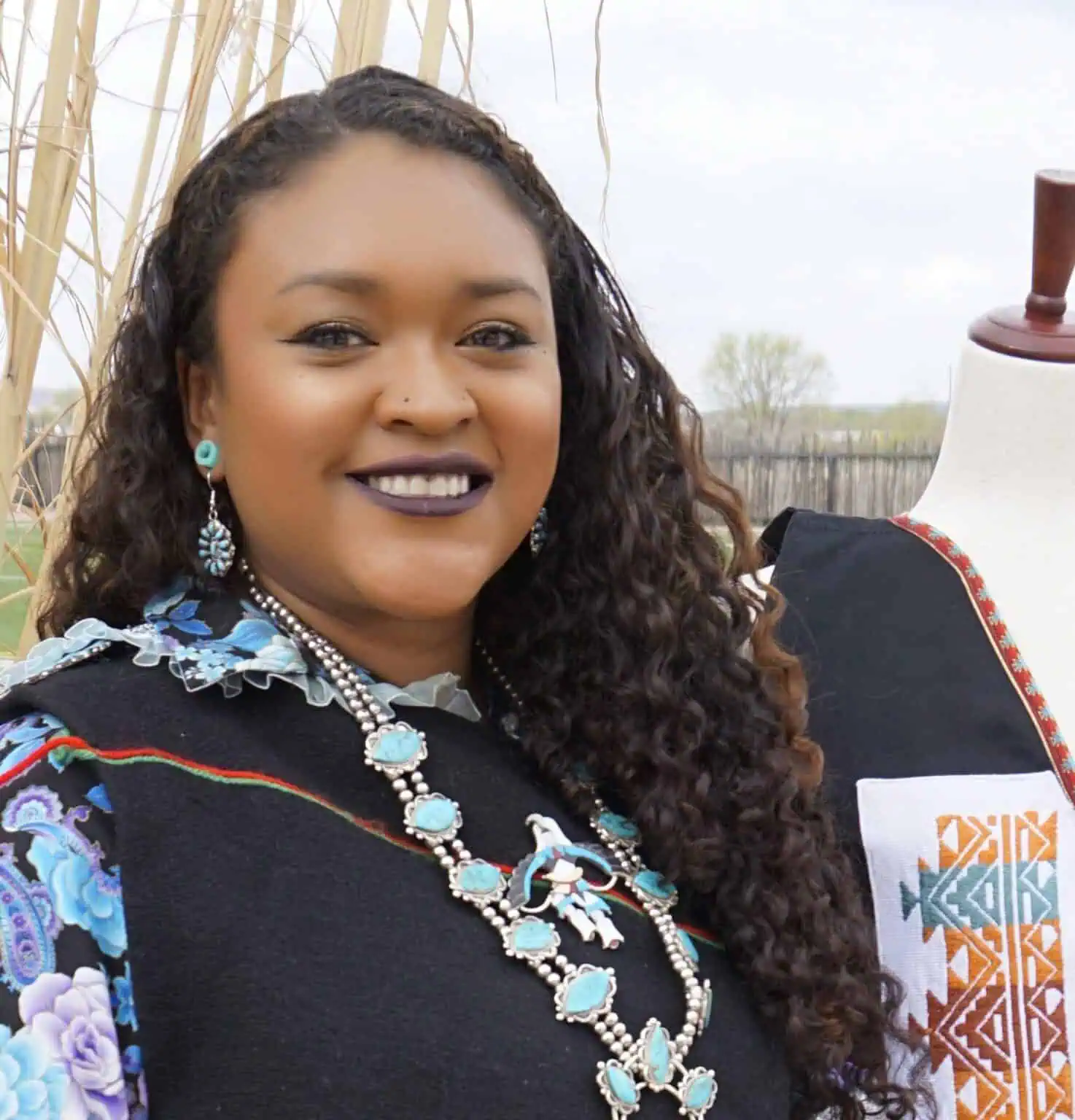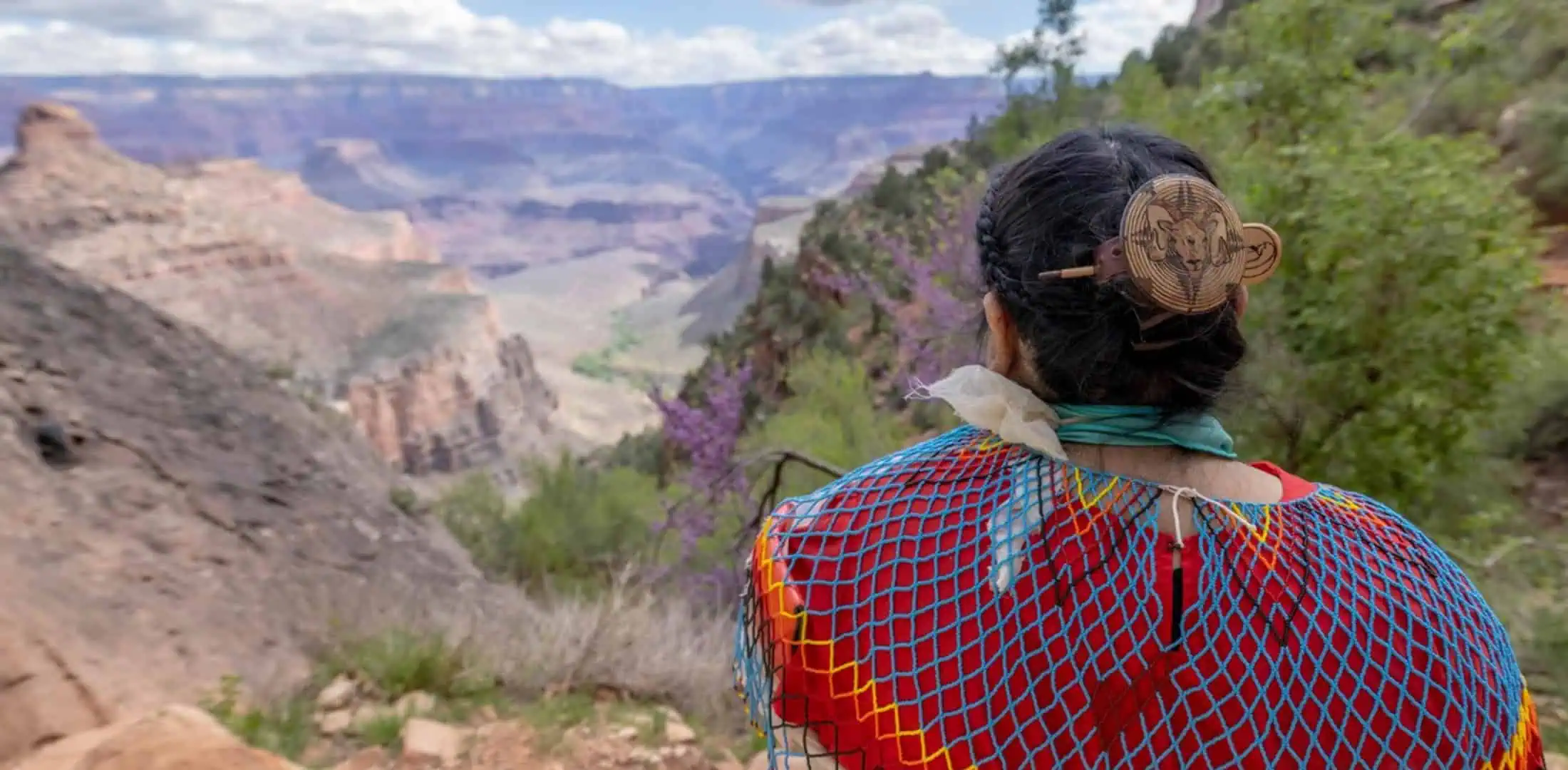Five Best Hikes in Grand Canyon National Park
Breathtaking views and an unforgettable experience, perfect for both seasoned adventurers and those seeking memorable day hikes. Here are the five best hikes in the Grand Canyon, from challenging descents to scenic rim trails.
1. Bright Angel Trail
Bright Angel Trail is one of the most iconic and accessible trails in the park, beginning at the South Rim and descending into the canyon. The trail’s switchbacks and steep inclines demand strong legs and stamina, especially on the return. Hikers are rewarded with incredible views, wildlife sightings, and geological formations that make it worth the effort. Note: there will be mules on this trail.
Distance: 9.5 miles one-way (full hike to the Colorado River)
Difficulty: Difficult
Tips: This well-maintained trail offers several turnaround points, which make it easier to customize based on your fitness level. Start early to avoid the midday heat, as there is limited shade.
Watch tips on how to stay safe while hiking in the Grand Canyon

2. South Kaibab Trail
The South Kaibab Trail offers some of the most dramatic vistas in the park. Unlike the Bright Angel Trail, this trail has very little shade and has no water along the trail, making it more demanding but incredibly rewarding. Hikers are treated to stunning panoramic views throughout, with popular stopping points like Ooh Aah Point and Skeleton Point that offer postcard-perfect views.
Distance: 6 miles round-trip to Skeleton Point
Difficulty: Strenuous
Tips: Due to the trail’s exposure to the sun, pack extra water and sun protection. The views are well worth the effort, so don’t forget your camera!
3. North Kaibab Trail
For those venturing to the North Rim, the North Kaibab Trail is the park’s only maintained trail that descends into the canyon from this side. Known for its solitude and lush surroundings, this trail takes hikers past waterfalls and the stunning rock layers of the Redwall section to Roaring Springs.
Distance: 9.4 miles round-trip to Roaring Springs
Difficulty: Extremely strenuous
Tips: This trail is quieter than those on the South Rim, making it ideal for those seeking a more secluded experience. Begin before 7 a.m. and be prepared for a long, challenging hike.

For a more leisurely experience, the Rim Trail follows the South Rim for about 13 miles, from the South Kaibab Trailhead to Hermits Rest. This mostly paved trail provides incredible views without the intense elevation changes of other canyon trails. Perfect for families or those looking for accessible viewpoints, the Rim Trail offers multiple overlooks, benches, and shuttle stops along the way.
Distance: Up to 13 miles one-way
Difficulty: Easy to moderate
Tips: You can hike as much or as little of the trail as you like, and since much of it is paved, this trail is also wheelchair accessible in certain sections.

For the billy goats out there, the Grandview Trail is a challenging, steep trail that descends about 3 miles (4.8 km) to Horseshoe Mesa, with options to continue further. Originally constructed in 1893 as a mining route, the trail is rocky, exposed, and demands caution. Featuring large steps, rugged terrain, and extreme dropoffs, the trail has an elevation change of around 2,600 feet (792 meters) in those three miles, making it best suited for experienced hikers. NPS recommends hikers not use this trail to access the Colorado River and consider walking the Bright Angel Trail for an easier hike.
Distance: 3 miles one way to Horseshoe Mesa
Difficulty: Extremely difficult, recommended for experienced desert hikers
Tips: Trail conditions can be rough, and it’s less maintained than popular routes like Bright Angel, so sturdy boots are essential. Start early to avoid heat, especially in summer, and carry plenty of water, as there’s little shade and no water along the trail.
Before you set out, always check the NPS website for the latest information and always HIKE SMART. Carry plenty of water and snacks, and although there are some places where pre-treated drinking water is available, make sure you have a method to treat water. And remember to bring The Ten Essentials, a list compiled by Sarah Shier, a Preventative Search and Rescue (PSAR) Ranger at Grand Canyon National Park. Her role is centered on educating hikers about the potential dangers of the trails and helping them plan to avoid incidents that could lead to rescues.
Top photo by EyeEm/Freepik
Grand Canyon by Raft
Have you ever wanted to see the Grand Canyon by raft? Every February 1 the lottery opens to apply for a permit for a non-commercial raft trip down the Colorado River.
Grab some friends to help you raft the boats, cook the food, and put up your tent. Noncommercial river trips are self-guided adventures, awarded through a weighted lottery, designed for individuals with the river skills necessary to independently coordinate and safely navigate technical, world-class rapids. (For professionally guided trips, please visit NPS River Concessioners.)
This section of the Colorado River is highly technical, and at least one member of your group must have the experience and skills required by the National Park Service.
Alexandra Nevada took her first trip through the Grand Canyon in October 2023. “I didn’t know anyone on the trip prior to going, though they have become lifelong friends,” she says. “My advice is to have experienced participants with you. Rafting, regardless of rapid classes, is a serious sport. Make sure you review your permit and know what you’re getting into. Call a ranger office to clear up any confusion.”
An avid rafter and Colorado resident, Nevada adds: “We all deserve to have a good time and a unique experience. Permits aid in this and help preserve an area, limit use, and keep our natural and human resources safe. Apply for permits, have patience, and don’t be disappointed if you don’t win a permit in a lottery system. You can always try again next year, or hopefully meet someone who has a permit and jump on their trip. Most importantly, all rafters should learn, live, and love Leave No Trace principles and respect our rivers, leaving them to be enjoyed in the future.”

Learn more and enter the lottery for a rafting permit here. Not ready to do it alone? A number of companies provide trips through the Grand Canyon. Learn more about commercial trips here.
Top Photo: Alexandra Nevada took “the trip of a lifetime” through the Grand Canyon in October 2023.
Grand Canyon Speaks Podcast Features Native American Voices
Grand Canyon NP kicks off Native American Heritage Month with the release of season two of Grand Canyon Speaks, a podcast that features Native American voices to explore the history, culture, and stories that are intrinsically linked to the Grand Canyon’s landscape.
The Grand Canyon Speaks podcast, a production supported by the National Park Service, invites listeners to explore the rich tapestry of Indigenous artistry, storytelling, and tradition surrounding the Grand Canyon. Through conversations with artists, community leaders, and cultural advocates, the podcast reveals the powerful bond between art, community, and the land, showcasing the voices of those who carry forward their traditions and inspire others to do the same. Each episode, recorded live before a visitor audience, features a member from one of the 11 associated tribes.

Gerald Dewavendewa
Hopi painter Gerald Dewavendewa shares how his childhood in a Hopi village shaped his view of art. His art celebrates his community, depicting vibrant stories and landscapes that are both personal and communal. He has worked with museums including the Smithsonian’s National Museum of the American Indian, and has written and illustrated a children’s book called “The Butterfly Dance.”

Noreen Simplicio
Zuni potter Noreen Simplicio is a dedicated advocate for youth empowerment. She speaks of learning her craft in high school and how she perfected her techniques—both traditional and contemporary. Respect for the landscape is a key part of her work and honoring of her heritage. Her pottery seeks to preserve Zuni culture while adding some of her own contemporary features.

Janet Yazzie
Navajo artist Janet M. Yazzie is renowned for her vibrant contemporary paintings that reflect her deep connection to Navajo traditions and the surrounding landscapes. Drawing inspiration from her roots, Janet’s work captures the beauty of Arizona’s wildlife and night skies with a kaleidoscope of colors. Her work was used for the Grand Canyon Speaks podcast logo.

Zuni Youth Enrichment Project
Lashae Harris, an embroiderer, Chasady Simplicio, a weaver, and Cassandra Tsalate, a potter, are all alumni of the of the Zuni Youth Enrichment Project (ZYEP), a community program designed to connect Zuni youth with their cultural roots. The artists credit ZYEP for guiding them to a craft that allows them to honor their heritage in a personal, creative way. They discuss how traditional art helps them feel empowered and connects them to their community.

Aaron White
Aaron White (Northern Ute/Diné) is a Grammy-nominated guitarist, singer/songwriter, Native American flutist, and flute maker. He co-founded the groundbreaking group Burning Sky, earning a Grammy nomination and Native American Music Award. Known for blending Native American flute with acoustic guitar and drums, his work has been featured in award-winning films. As an accomplished flute maker, his creations are showcased at the Musical Instrument Museum in Phoenix, AZ.

Gregory Hill
Hopi carver and toymaker Gregory Hill offers a different perspective on art as he discusses his work reviving the Patukya, a traditional spinning top. Gregory’s creations inspire childlike wonder in adults, reconnecting them to a sense of joy and simplicity. His efforts have sparked a resurgence in traditional Hopi toys, encouraging other artists to join in preserving this unique form of art.

Zane Jacobs
Zane Jacobs, who is Diné, is the first traditional, local president of Flagstaff Pride. Zane reflects on his experiences growing up near the Grand Canyon and his journey from volunteer to president. His leadership focuses on promoting acceptance, inclusivity, and strengthening Flagstaff’s LGBTQIA2S+ community.

Ciara Minjarez and Shalitha Peaches
Ciara Minjarez and Shalitha Peaches, both members of the White Mountain Apache tribe, discuss food sovereignty. Their work emphasizes the importance of connecting Indigenous communities with traditional food sources, a journey they see as “elders in training,” readying themselves to pass on vital knowledge. Ciara Minjarez is Indigenous Foodways Program Manager at Local First Arizona. Shalitha Peaches is Distribution Manager at Ndee Bikiyaa, The People’s Farm.

Keia Gasper and Jaynie Lalio
Keia Gasper and Jaynie Lalio, 2023-2024 Zuni Royalty, talk about their roles as representatives of the Zuni community. The Zuni Royalty Organization (formerly the Miss Zuni Organization) is dedicated to promoting Zuni culture and traditions among the youth. These titles provide a platform for young Zuni individuals to showcase their talents, promote health, education, and community engagement, and serve as cultural ambassadors for the Zuni people. Keia and Jaynie share how their duties have shaped their character and strengthened their connection to Zuni culture and the Grand Canyon’s sacred landscape.

Top photo by National Park Service




